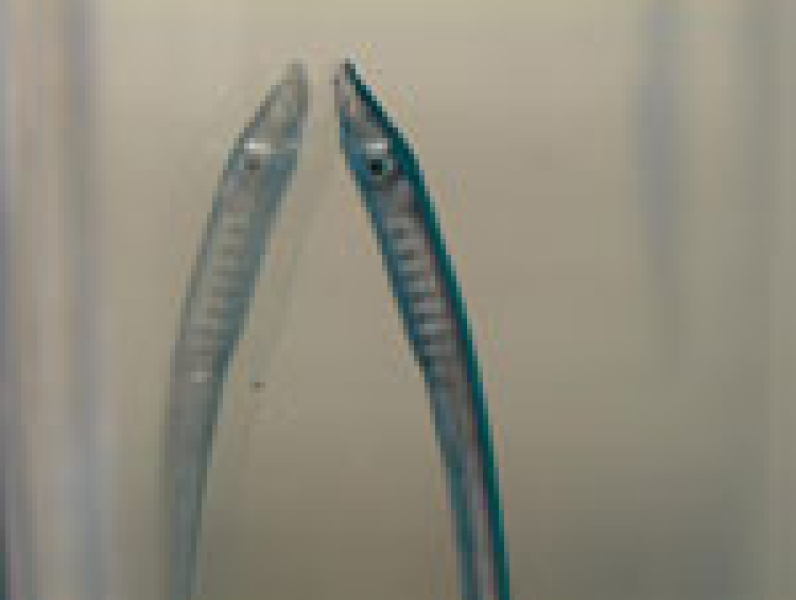Piharau/kanakana are an important mahinga kai species and a prized delicacy for many Māori.
Common name: Lamprey Scientific name: Geotria australis Māori names: includes piharau and kanakana
About this species
Piharau is an ancient and primitive fish with a single species inhabiting Aotearoa. Lamprey have a unique life cycle. Very briefly, juvenile lamprey spend several years in freshwater before metamorphosing (changing colour and form) and migrating to sea. They come back into our freshwaters as adults and migrate upstream to particular areas to spawn, where the larvae hatch and grow into juvenile lamprey and the cycle continues.
Young (juvenile) ammocoetes live in burrows along the sides of streams which are characterised by silty sediment and slow moving water. Juveniles prefer shaded run habitats and fine sand.
Adult piharau migrate upstream at night. During the day they seek refuge under cover or within debris dams and are considered to be cryptic and uncommon in many areas, hence little is known of their habitats.
Piharau have an anadromous life cycle with four key life stages. Ammocoetes begin their life as blind brown-grey colored filter feeders in freshwater. Once they reach 80-100 mm in length, they metamorphose into macrophthalmia. These are silver with thin blue strips along their back and have large silvery eyes. At this stage, piharau migrate downstream to the ocean where they are parasitic on other fish, using their sucker-like mouth to draw blood from their host.
After about 3 to 5 years in the ocean, adult silver-blue lamprey enter freshwaters during winter/spring. They stop feeding once in freshwater. As they travel upstream to their spawning areas they change to a brown color, loose weight and get shorter. The males grow a pouch behind the mouth. The adults die after spawning.
Traditional knowledge
Piharau/kanakana are an important taonga species and is a prized delicacy for many Māori communities. In the past lamprey were seasonally abundant in many New Zealand rivers and they were at times taken in huge quantities.
The fact that adult piharau seek out cover during the day was well known to Maori who used a technique of laying fern fronds downstream of a small rock weir to catch them. Piharau use the fern fronds as cover and can be harvested by hand. Piharau were taken using utu piharau (lamprey weirs) when they moved into freshwater to spawn. Fern fronds can be used below utu piharau to capture piharau. Only fresh run lamprey were taken, as they were considered to be inedible after they had moved further inland (once their heads enlarged and a pouch formed below the eye). Lamprey were dried to provide food in winter and they were also used in bartering. In remote places along the Whanganui River, utu piharau are still used to capture this traditional fishery.
Impacts on piharau
Even though lamprey comprise an important customary fishery, very little is known about their biology and there are large gaps in our understanding about what they do at certain stages of their life cycle. It is likely that piharau have declined as land use changed, but as the spawning habitat is unknown, loss of spawning grounds cannot be confirmed.
References and further reading
Find papers relevant to all Aotearoa freshwater fish on our reference page
Piharau, lamprey
- Jellyman, D. J., Glova, G. J. 2002. Habitat use by juvenile lampreys (Geotria australis) in a large New Zealand river. New Zealand Journal of Marine and Freshwater Research 36: 503-510.
- Jellyman, D. J., Glova, G. J., Sykes, J. R. E. 2002. Movements and habitats of adult lamprey (Geotria australis) in two New Zealand waterways. New Zealand Journal of Marine and Freshwater Research 36: 53-65.

